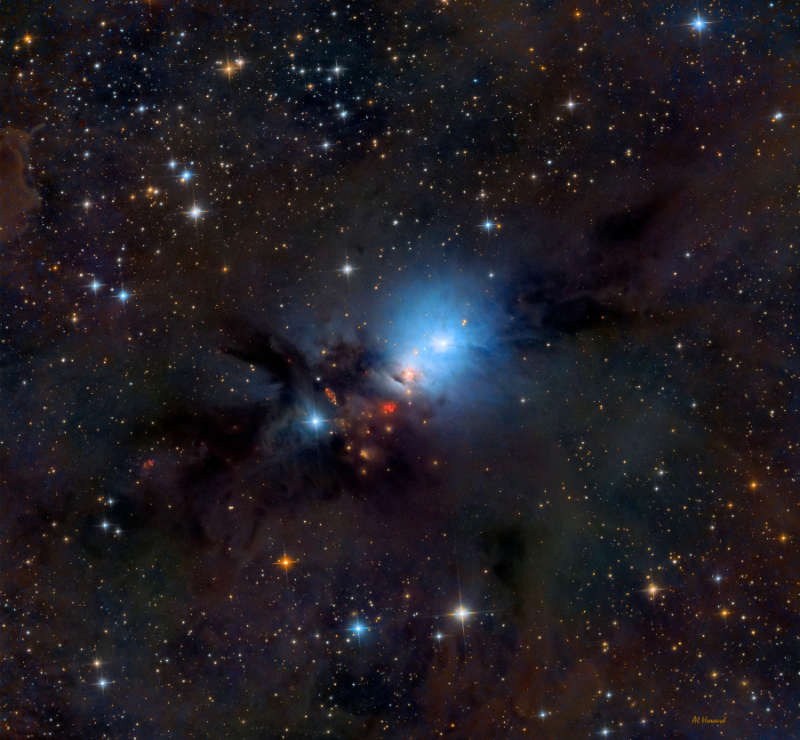
|
Credit & Copyright: Al Howard
Explanation:
NGC 1333 is seen in visible light as
a reflection nebula,
dominated by bluish hues characteristic of starlight reflected by dust.
A mere 1,000 light-years distant toward the heroic constellation
Perseus,
it lies at the edge of a large,
star-forming molecular cloud.
This striking close-up view spans
about two full moons on the sky or just over
15 light-years at the estimated distance of NGC 1333.
It shows details of the dusty region
along with hints of contrasting red emission from
Herbig-Haro
objects, jets
and shocked glowing gas emanating from recently formed stars.
In fact, NGC 1333 contains hundreds of stars less than
a million years old,
most still hidden
from optical telescopes by the
pervasive stardust.
The chaotic environment may be similar to one in which our own Sun
formed over 4.5 billion years ago.
|
January February March April May June July August September October November December |
| |||||||||||||||||||||||||||||||||||||||||||||||||||||||
NASA Web Site Statements, Warnings, and Disclaimers
NASA Official: Jay Norris. Specific rights apply.
A service of: LHEA at NASA / GSFC
& Michigan Tech. U.
Based on Astronomy Picture
Of the Day
Publications with keywords: reflection nebula - dust - star formation
Publications with words: reflection nebula - dust - star formation
See also:
- APOD: 2025 December 9 Á The Heart of the Soul Nebula
- APOD: 2025 September 19 Á The NGC 6914 Complex
- APOD: 2025 August 28 Á Galaxies, Stars, and Dust
- APOD: 2025 July 10 Á Lynds Dark Nebula 1251
- APOD: 2025 June 23 Á W5: Pillars of Star Formation
- APOD: 2025 April 28 Á Gum 37 and the Southern Tadpoles
- APOD: 2025 March 26 Á Star Formation in the Pacman Nebula
